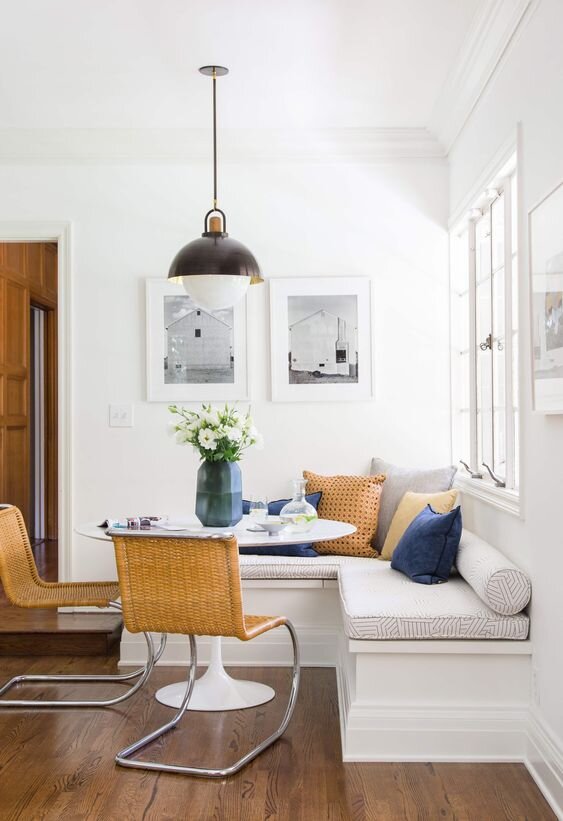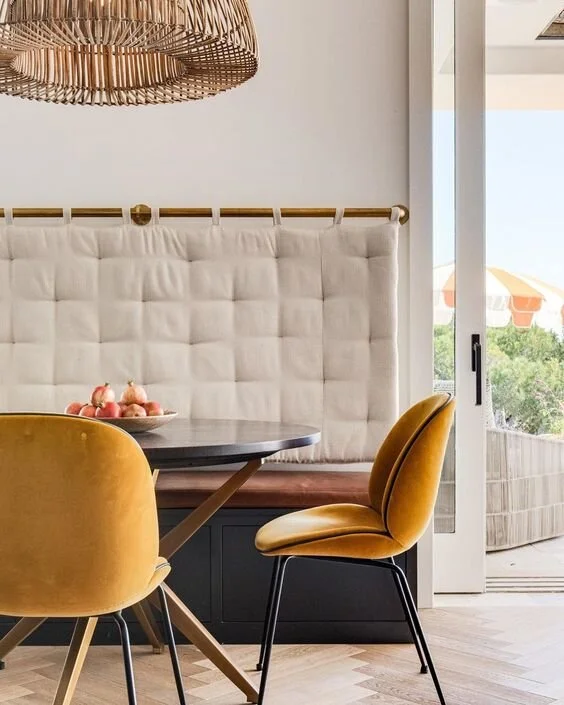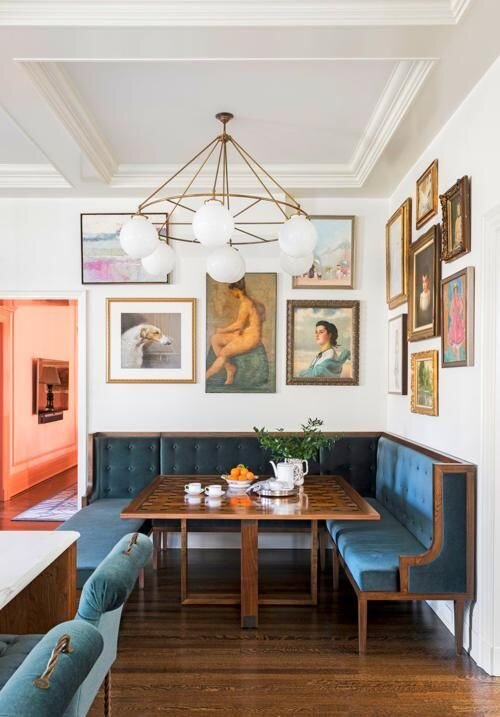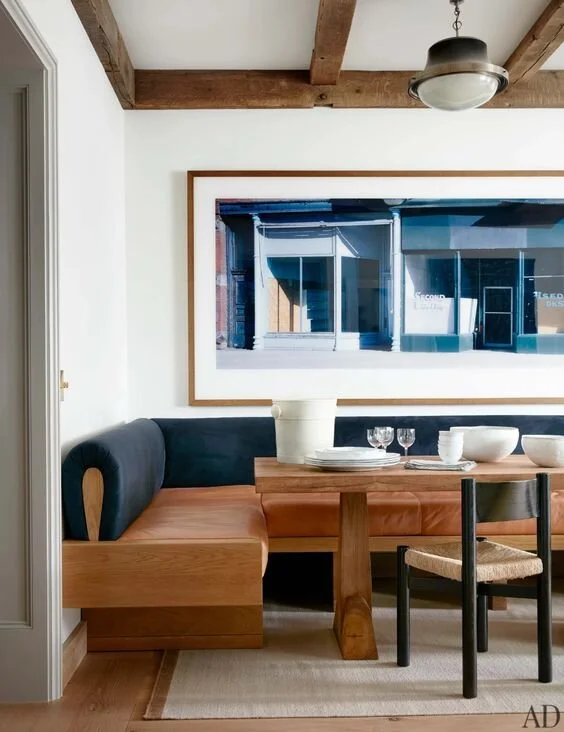These days, we’re eating meals at home more than ever before, and that means creating a space that is functional and stylish is essential to making mealtime as enjoyable (and close to restaurant quality) as possible. Yet, not everyone has the luxury of both an eat-in kitchen space for casual breakfasts and a separate formal dining room for larger, more involved dinners. So, what’s the solution? Quite simply, the banquette.
We’ve always loved banquette seating here at INVIEW - not only is it a great way to create a functional area out of even the smallest of living spaces, but it’s also got flexibility written all over it. By adding a chair or two, you can easily fit a larger group of people around the table, and because banquette seating is by nature a mix and match type of setup, it allows you to get as creative as you want (while avoiding those dreaded “sets” available at most big box stores).
They’re really easy and accessible to create - all you need are a few key elements, and you’ve got a nook that’s fit for everything from a solo glass of wine to a makeshift homework space for the kids. Read on for our step-by-step guide - the dining space of your dreams awaits.
Step 1: Seating
Determining your functional needs is the obvious starting point for your banquette. Are you furnishing a kitchen corner? A long wall in an open floor plan layout? A living/dining room combo? Knowing exactly what type of seating you’ll need is essential. And while rules can certainly be bent and broken when it comes to customizing your banquette, typically a corner setup requires an L-shaped bench (with optional additional chairs) while a wall banquette is generally made up of a bench and two or more chairs set on the opposite end of the table.
Step 2: Table Shape & Size
Now that you’ve got your seating nailed down, it’s time to choose your table shape and size. Again, you’ll need to assess the needs of your room and the function of this dining area, and first up is size. If you’re furnishing a small kitchen nook meant for casual coffee and breakfast, you can get away with a smaller table that needs to hold only a few glasses or plates. However, if this banquette is your full-time dining zone that needs to comfortably fit a family of four or more, a larger table is a must.
Next up is table shape. This has to do more with aesthetic choice than anything, although there are some functional elements involved as well. A round table will usually forge a nice contrast with the straighter lines of a banquette bench, and as a bonus, it also is a bit easier to navigate around. If you want a sleeker, more modern look overall, though then sticking to a rectangular or square table is the way to go.
Step 3: Comfort
Comfort is key when it comes to banquettes - after all, if you’re planning to continue to spend long hours and endless meals at home (which is the case for the foreseeable future), a lot of time will be spent sitting here. Needless to say, you want it to be as cushy and inviting as can be. The key here is to incorporate plenty of textiles and padding - whether via seat cushions, an upholstered backrest, or a slew of colorful and plush throw pillows. The more you can settle in and relax, the better.
Step 4: Lighting
Lighting is such a critical part of bringing your entire banquette together, and it’s often overlooked. So, how do you do it? Well, the biggest thing to remember is that you need to get the scale right. People tend to shrink back from the big and bold fixtures, going instead for something small and less obtrusive over their table. The thought is that if they go too big, it will overwhelm the space, but that couldn’t be further from the truth! A too-small fixture will feel dwarfed in comparison to your furniture while a large-scale fixture will actually help to anchor the space visually, and to draw the eye upward, thereby making your banquette feel larger than it actually is. Whether you opt for a pendant or a flush mount, as long as you properly scale it to the space, you’ll be ready to go.
Step 5: Art
A banquette isn’t complete without a touch of art on the walls. A gallery wall, a single large-scale piece, or a smaller portrait (or two) to balance out a window on the opposite side - the options for arranging art are endless, but also essential to bringing the entire look together. Just remember to keep it proportional to your furniture. If your nook is in a tight corner of a kitchen, too much art may feel overwhelming, just as a large blank wall may feel bare with just a small framed piece.
Ready to create your own banquette? Follow these steps and you’re guaranteed to be dining in style - all the way through the end of quarantine and beyond.
By Megan Johansson, Contributor to INVIEW Interior Design
















